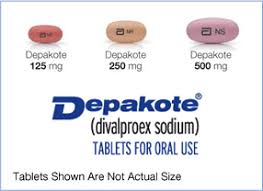Dapagliflozin
Dapagliflozin is a distinguished pharmaceutical agent employed in the management of various chronic ailments, notably type 2 diabetes mellitus, heart failure, and chronic kidney disease. Its advantages transcend mere glycemic regulation, encompassing enhancements in cardiovascular health and the deceleration of kidney disease progression.
Chemical and Pharmacological Characteristics
Generic Name: Dapagliflozin
Brand Names: Farxiga, Forxiga (dependent on geographical location)
Drug Class: Sodium-glucose cotransporter-2 (SGLT2) inhibitor
Chemical Formula: C21H25ClO6
Molecular Weight: 408.87 g/mol
Mechanism of Action:
Inhibits SGLT2 within the proximal renal tubules of the kidneys.
Facilitates the excretion of glucose through urine, thereby preventing its reabsorption into the bloodstream (glycosuria).
Exhibits a mild diuretic effect, alleviating fluid retention.
FDA and EMA-Approved Indications
Primary Applications
Type 2 Diabetes Mellitus (T2DM):
Reduces blood glucose levels by enhancing glucose excretion via urine.
Can be utilized as a standalone treatment or in conjunction with other antidiabetic agents such as metformin, sulfonylureas, or insulin.
Heart Failure with Reduced Ejection Fraction (HFrEF):
Alleviates symptoms, diminishes hospitalization risks, and lowers the likelihood of cardiovascular mortality in heart failure patients.
Chronic Kidney Disease (CKD):
Aids in slowing the progression of CKD in individuals with or without diabetes.
Lowers the risk of kidney failure, cardiovascular incidents, and overall mortality.
Off-Label Applications
May be explored for specific types of heart failure with preserved ejection fraction (HFpEF) or other metabolic disorders, although formal indications may differ by region.
Clinical Advantages
Type 2 Diabetes Mellitus:
Reduces HbA1c levels (average decrease: 0.5–1.0%).
Encourages weight reduction (average loss: 2–3 kg) due to caloric loss through urine.
Lowers both fasting and postprandial blood glucose levels.
Heart Failure:
Alleviates the burden on the heart by mitigating fluid overload.
Decreases the frequency of hospital admissions related to heart failure.
Imparts cardiovascular benefits that extend beyond mere glycemic regulation.
Chronic Kidney Disease:
Diminishes the likelihood of advancing to end-stage kidney disease (ESKD).
Offers renal safeguarding by curtailing hyperfiltration and inflammation within the kidneys.
Additional Benefits:
Facilitates a modest decrease in blood pressure, averaging a reduction of 2–4 mmHg.
Enhances overall quality of life through alleviation of symptoms associated with heart failure.
Dosage and Administration:
Route of Administration: Oral.
Standard Dosage: 10 mg once daily, with or without meals.
Dose Adjustments:
Tailored according to renal function and clinical status.
Not advisable in cases of severe renal impairment (eGFR< 30 mL/min/1.73 m2), except for certain CKD indications.
Side Effects:
Common Side Effects:
Increased urination (polyuria).
Genital fungal infections (e.g., yeast infections in both men and women).
Mild hypovolemia (reduced blood volume) resulting in dizziness or thirst.
Urinary tract infections (UTIs).
Serious Side Effects:
Euglycemic Diabetic Ketoacidosis (EDKA):
A rare but potentially life-threatening condition.
Symptoms include nausea, vomiting, abdominal discomfort, and confusion.
Necrotizing Fasciitis (Fournier’s Gangrene):
An uncommon infection affecting the perineal area.
Acute Kidney Injury:
Heightened risk in individuals experiencing dehydration or those on nephrotoxic medications.
Hypoglycemia:
Increased risk when combined with insulin or insulin secretagogues.
Precautions:
Patients are advised to maintain adequate hydration to reduce the risk of dehydration and kidney damage.
Vigilance for signs of infection, particularly in the genital or urinary regions, is essential.
Contraindications
Severe renal impairment (eGFR< 30 mL/min/1.73 m2), with exceptions for specific chronic kidney disease indications.
Hypersensitivity to dapagliflozin or any of its components.
Active bladder cancer (to be approached with caution).
Individuals with a history of recurrent ketoacidosis.
Drug Interactions
Diuretics: Heightened risk of dehydration and hypotension.
Insulin and Insulin Secretagogues (such as sulfonylureas): Increased likelihood of hypoglycemia.
ACE Inhibitors or ARBs: Potential to worsen renal function decline in dehydrated individuals.
Monitoring
Baseline Assessments:
Renal function (eGFR, creatinine levels).
Blood glucose levels and HbA1c.
During Treatment:
Regular monitoring of renal function.
Awareness of ketoacidosis symptoms (even with normal blood glucose).
Signs of infection or dehydration.
Warnings and Special Considerations
Geriatric Use:
Exercise caution with older adults due to an elevated risk of dehydration and renal impairment.
Pregnancy and Lactation:
Not advised; limited safety data is available.
Pediatric Use:
Safety and efficacy in pediatric populations remain inadequately established.

Comparative Advantages
Weight Management: Distinct among diabetes medications, dapagliflozin aids in weight loss.
Cardiovascular and Renal Advantages: Exhibits protective effects even in non-diabetic individuals, setting it apart from numerous other diabetes therapies.
Clinical Trials and Evidence
DAPA-HF Trial:
Demonstrated significant reductions in hospitalization and mortality among heart failure patients.
DAPA-CKD Trial:
Showed benefits in decelerating chronic kidney disease progression and lowering cardiovascular events.
DECLARE-TIMI 58 Trial:
Validated cardiovascular safety and advantages in patients with diabetes.
Conclusion :
To summarize, Dapagliflozin stands out as a highly adaptable medication, providing substantial benefits in the treatment of type 2 diabetes, heart failure, and chronic kidney disease. Its remarkable capacity to improve glucose regulation, support cardiovascular health, and offer renal protection establishes it as a fundamental therapy across a spectrum of chronic conditions. However, meticulous monitoring is crucial to alleviate potential side effects and to maximize therapeutic outcomes.



